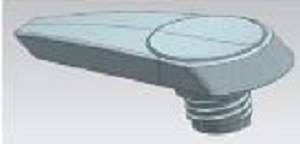|
There are a few plastics such as PVC or
ABS that have inherent tendency to turn yellowish or get discoloured
during the process of manufacturing, making the polymers look very
dirty. To avoid or prevent the yellowish dirty look, optical brighteners
are used alone or in combination with other dyes to produce pleasing
color shades. Generally pastel dyes are used because they give a
cleaner and brilliant appearance. Additionally, these optical brighteners,
which are essentially fluorescent whitening agents, are always used
while restoring recycled plastics. These optical brighteners function
by absorbing light in UV-A range (320-400) and re-emitting the light
in the visible blue range (400-480). During the emission they provide
fluorescence. Optical brighteners are more effective in lighter
shades and may not be very useful in the dark colours.
Two of the most commonly used optical brighteners are derivatives
of the bis-benzoxazoles (bis-benzoxazolyl-stilbene (BBS) and bis-benzoxazolyl-thiophene
(BBT). Both of these products have a very high melting point as
well as excellent thermal stability. While BBS can be used for all
plastics except PVC because of their low compatibility, BBT is used
for PVC. These optical brighteners are generally very expensive
but are required to be used at very low levels. The typical dosage
could be as low as 5-10 ppms for natural polymers and about 250
ppms for coloured polymers. Both of them can be used in contact
with food. The polymer manufacturers can incorporate them during
manufacturing process. However, masterbatches of optical brighteners
are also available from major suppliers for the converters. For
PVC, optical brightener can be used during compounding process.
Previous Article
Next Article
Tell Us What You Want

Moulds for lotion pump
| | | |
